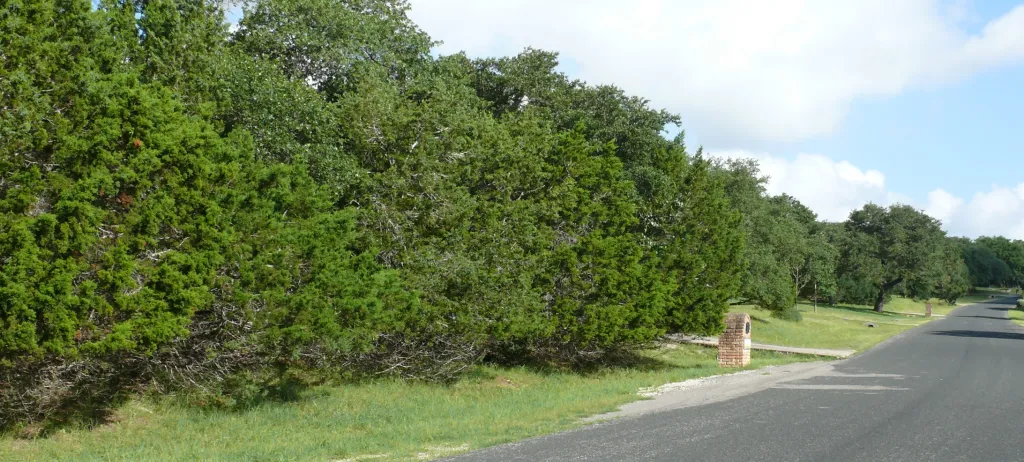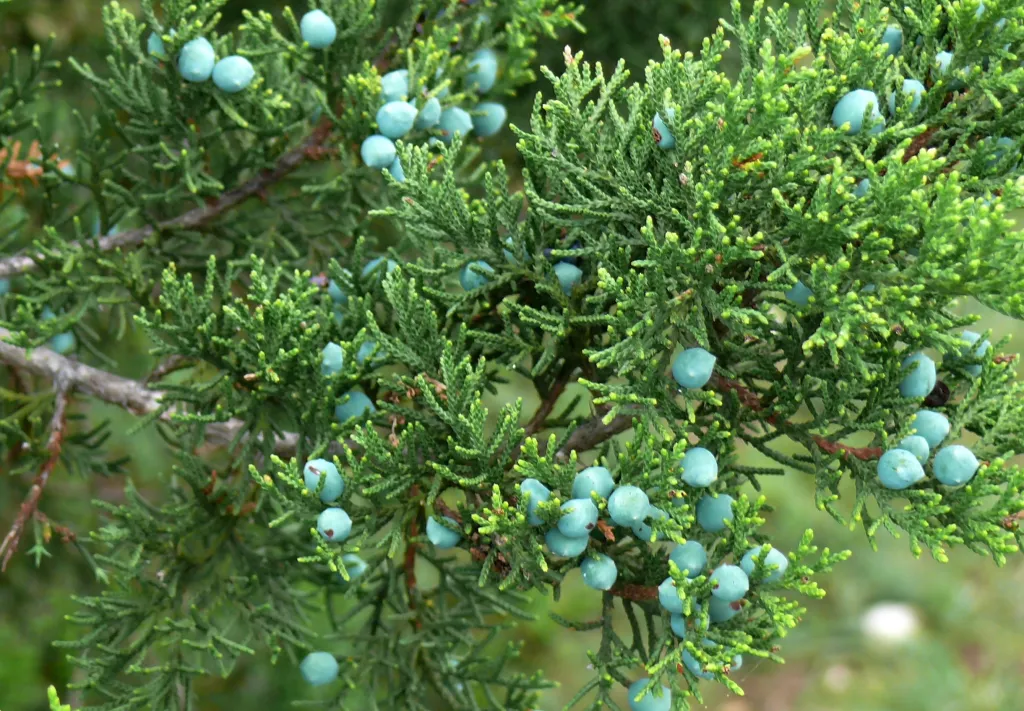Author: Bill Ward
There are a couple of myths about “mountain cedar” or Ashe juniper (Juniperus ashei) that seem to be part of the conventional wisdom of the Texas Hill Country. One is that mountain cedar doesn’t really belong here because it only recently invaded the Hill Country. The other is that merely clearing away mountain cedar will bring spring flow.

For several reasons, both of these persistent ideas might seem plausible, but are there any data to verify they are true? As I used to try to convince my students, plausible assumption is not scientific fact.
Many people I’ve met around the Hill Country believe that most of the mountain cedar moved up from Mexico during the early Twentieth Century, and some people are not certain it should be considered a native tree. Certainly during the Twentieth Century, mountain cedar did become more widespread over the Hill Country, because prairie fires were inhibited and grasslands were overgrazed. Now millions of acres of the Edwards Plateau are overgrown with dense cedar brakes, but is this the result of a relatively recent invasion of the species to this area?
In 1845, the Ferdinand Lindheimer, Father of Texas Botany, wrote, “The cedars form wide strips of forest along the river banks” of the Comal River. In the same letter he described the hilly terrain north of the Comal as having bare hill tops, streams with a few kinds of trees, mostly elms, and “otherwise only cedars on the slopes of the hills and in low-lying places” (from “A Life Among Texas Flora” by M. A. Goyne).
The following year, referring to a geranium he had collected, Lindheimer wrote, “It grows in the hills, you see, on the plateau, which is here 200 feet high, full of ravines that are densely covered with cedars and underbrush, and to which one has few ways of access along the slopes.” I know those sorts of “ravines” too well, having been over-heated and scratched-up trying to move through their cedar brakes. They are typical of the Hill Country today.
But what about before Lindheimer’s time? How long has mountain cedar been in the Hill Country? Robert P. Adams of Baylor University has done 30 years of research that involves that very subject. Dr. Adams is an authority on the phylogenetic (life tree) relationships of all living juniper species based on DNA sequencing, and he has studied both extinct and living varieties of mountain cedar (Juniperus ashei).

Adams has concluded that based on pollen profiles, J. ashei grew mixed with deciduous trees in Central Texas during the late Pleistocene (about 125,000 to 13,000 years ago). However, by the end of the last major glacial period 10,000-13,000 years ago, populations of mountain cedar in Central Texas probably were extinct because the area was too wet and cool. Most likely that variety of mountain cedar had been pushed into West Texas and Mexico, where in remains today.
After the Ice Age ended, a different variety of the mountain cedar species emerged from a remnant population and colonized Central Texas limestone outcrops. This variety was competitive in invading grasslands. The Hill Country has had the current variety of Ashe juniper for thousands of years.
There are several reasons people might hold mountain cedar in great disdain, especially landowners wanting to maintain their grassland and people who suffer cedar allergies. But many think the most important reason for wanting to rid the Hill Country of cedar is that they are water guzzlers. Does scientific research validate that plausible assumption? There are some interesting conclusions coming from recent studies. That’s the topic for Mountain Cedar — Part 2.
